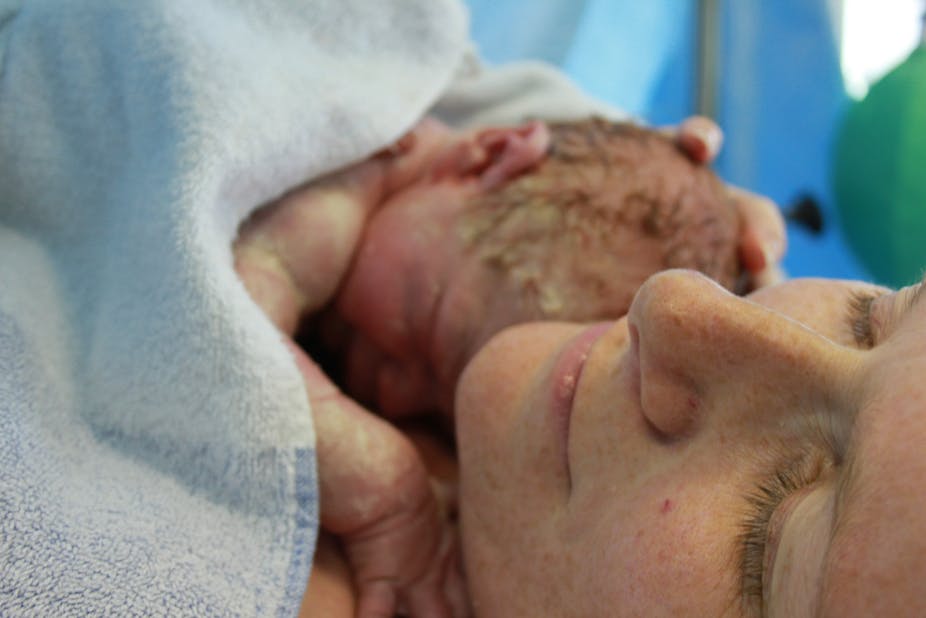There is a substantial literature on labour and childbirth in medical, midwifery and social scientific research. But we still don’t know much about how labouring women experience that pivotal time when their bodies are working hard to push out their infants and deliver them into the world.
As part of a qualitative longitudinal study of first-time parents living in Sydney, we asked 25 women who had recently given birth to recount their birth stories.
Sixteen of these women gave birth vaginally (ten without anaesthesia); the remaining nine delivered by caesarean section.
When retelling their birthing experience, women who had given birth vaginally without anaesthesia noted they were surprised by the powerful physicality of giving birth. Of course, they had to cope with labour pain but also often reported feeling vulnerable during the second stage of labour, when the foetus is being pushed through the birth canal.
One of our interviewees discussed her sense of feeling her body “open” to the world as its boundaries were stretched and widened:
The fact that you have to open up so much – you feel raw and exposed to yourself and to others and there is this expectation of just having to open up more.
The words of the women in our study attest to the profound nature of birth, simultaneously awe-inspiring and overwhelming, as a woman’s known self and body “splits” to become two.
It can take some time for women to come to terms with this conceptual as well as physical change.
Several of our participants commented that when they gazed at their newborn infants for the first time, their first reaction was to exclaim, “Where did this baby come from?” It felt foreign to them, at first, that their babies were now separate from their own bodies.
We found the sheer physical exertion and often significant pain that women who delivered vaginally experienced often helped them to come to terms with the concept that their infant was now out of their bodies.
Our research showed that for women who had undergone caesarean sections, this experience of “meeting the baby” for the first time may be even more challenging.
The sensation of their infant’s body emerging from their own was completely dulled by anaesthesia. These women were not even able to view the moment of emergence because of the screen placed between their upper and lower torso.
They described how they found it difficult to accept their infant had been born. They were forced to rely upon others’ observations – those of their partner or the attending health professionals – to receive some idea of what was happening.
One woman commented on the speed of the operation and how she was taken aback by being presented with her infant so quickly, before she had quite prepared herself.
She felt so little physical sensation that she found it quite astonishing that the birth had occurred:
The actual operation was – the sensation was weird. Like you can feel something going on, no pain whatsoever, it was so quick, and the baby was out. I don’t know, it was all very gentle it seemed. And they obviously cut me open at some stage, and then held her up, and I was like, “Oh my God, that was too quick!”
It’s important that people supporting a woman at the moment of birth, including midwives, other health professionals, partners, and other support people, are aware that women may respond differently to this experience.
Some women want immediate contact with their newborn infant, reaching to bring their child close again to their body. Others, particularly those who give birth vaginally, may look away momentarily or may take longer before being ready to bring their baby close.
It’s as though they need to re-establish a boundary between what is inside and outside their bodies as part of coming to terms with the birth experience.
For a woman to successfully recover from giving birth (regardless of the mode of delivery she experiences), she needs people caring for her during childbirth to be attuned to her needs. Our research shows that these needs may include understanding that a recently-delivered mother has to come to terms with a profound conceptual as well as physical disruption of selfhood.

